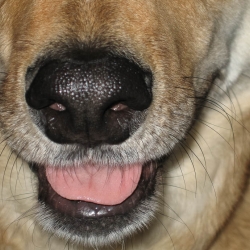Home > Topics > Post Processing > Capture One > Best Practices for external hard drives with Capture One
Best Practices for external hard drives with Capture One
Tagged: External Hard Drive
-
AuthorTopic: Best Practices for external hard drives with Capture One Read 2711 Times
-
Capture Oneon: February 25, 2020 at 3:51 pm
Does anyone know where I can find information on using external SSD drives with C1 in a session work flow or a catalog work flow? I am primarily working with sessions.
My experience has been that edits are not retained consistently when the session resides on an external drive. I suspect that it is due to latency in hard drive writes but I cannot be sure. I have looked on the Capture One support page, submitted a ticket to support, and browsed a number of on-line forums. No one seems to offer an answer.
The best information I could find was from Paul Steunebrink, who suggested in a brief forum post that internal drives should be used “…until the job is done…”
-
This topic was modified 4 years, 6 months ago by
Scott Nations. Reason: pasted information was incorrect
Re: Best Practices for external hard drives with Capture OneReply #1 on: February 25, 2020 at 4:48 pmI am on the Win 10 pc platform. As best I can tell, users with Macs and thunderbolt or USB C drives are not having this problem. I’ve been told that on the Mac platform (with TB or USB C) there is no distinction between external and internal drives.
Re: Best Practices for external hard drives with Capture OneReply #2 on: February 25, 2020 at 5:08 pmI work with all my raw files on an external HD – an old fashion disk, not SSD. I haven’t had any issues. The C1 catalog itself is on an internal drive (which is a hybrid SSD-HD on my iMac). C1 and Lr read the raw file only when necessary (to create new previews). They don’t write to the raw file directories (unless you are moving things around). They mostly work from local previews and caches in the catalog. So, I think it is a good idea to have the catalog on an internal drive, but it shouldn’t make any difference where the actual raw files are.
I haven’t done much with sessions. Don’t they use EIPs, which bundle the raw file along with preview and adjustments? (Kind of like raw + sidecar.) If so, then you probably do want the EIPs (at least) on an internal drive.
Related issue: I tried using EIPs to transfer stuff between catalogs – didn’t work very well. Then I noticed in one of the User Manual articles “Note: EIP is not recommended to be used with catalogs”. 🙁
JSS
Re: Best Practices for external hard drives with Capture OneReply #3 on: February 25, 2020 at 6:04 pmThe best information I have is that the issue I described (editing photos which reside on an external drive) works fine with a catalog workflow so long as the catalog itself resides on an internal drive. This is apparently not true for sessions; though some Mac users appear to edit sessions on external files without issues. In a session, a database file *.cosessiondb resides in the same folder structure as photos themselves. This database contains all the edits. Thus, if there are any unwritten edits in Capture One and the session is closed or the user exits Capture One, then apparently the *.cosessiondb file may not be updated.
As I understand it, the workflow for some Mac users who travel is this: all captured images are placed on an external drive, preferably an SSD. They may perform some editing and culling in the field using a laptop. Once they return home, the files are moved to more permanent storage where the editing is continued on a desktop.
Re: Best Practices for external hard drives with Capture OneReply #4 on: February 26, 2020 at 11:32 pmI’ve been using sessions on an external SSD for a few years. Currently on a 2gb M.2 drive in an Orico housing. 15in MBP 2018. I’ve never noticed any issues with unwritten edits, and some of my work includes several hundred images taken in a “remote studio” environment, i.e. laptop, drive and tethered digital back. Below is a screenshot You can see the session on the external drive, connected via usb.
Dave

How glorious a greeting the sun gives the mountains! - John Muir
https://www.davechewphotography.com
Find legacy Schneider-Kreuznach Apo-Digitar lens data here: https://www.davechewphotography.com/skdata/Re: Best Practices for external hard drives with Capture OneReply #5 on: February 27, 2020 at 12:31 amDave Chew: I have yet to hear from a Mac user for whom this is an issue. I am currently on a Win 10 PC. My testing is preliminary but it appears to be related to Win 10 settings for write caching on external drives. The previous default setting before version 1809 was to enable write caching. The new default is “quick removal” which disables write caching and allows hot swapping of drives without ejecting them. As best I can tell, once write caching is re-enabled the issue goes away. I worked most of today using a sessions workflow without issue.
-
This topic was modified 4 years, 6 months ago by
-
AuthorPosts
- You must be logged in to reply to this topic.



